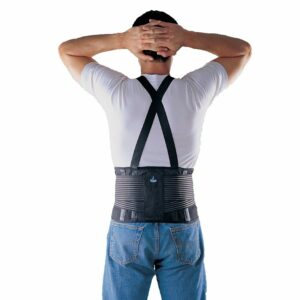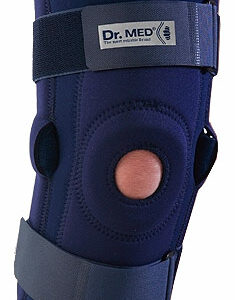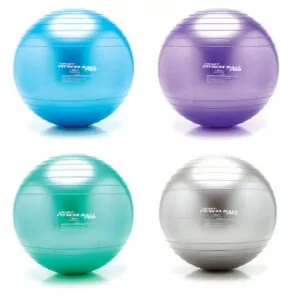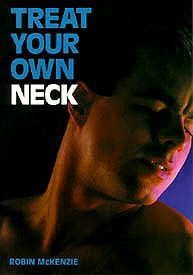Diagnostic Guide – Head & Neck Pain
Updated:
Patients suffering from neck pain are frequently seen in physiotherapy practice and are one of the most common clinical presentations. Patients suffering from headache, although less common, are also often seen. Pain is usually caused by local structures within or around the head or neck, or, may occasionally be referred from other sources (such as the upper back, jaw or shoulders).
Sudden onset neck pain often occurs in individuals involved with contact sports, motor vehicle accidents, heavy lifting, bending forward or sideways, twisting of the neck, or, combinations of these movements. It is also relatively common for patients to experience sudden onset neck pain during a trivial bending movement, such as during sneezing. These acute injuries usually involve tearing of connective tissue around the joints of the neck and often have associated muscle spasm. One of the most common causes of sudden onset neck pain (with or without pain radiating into the upper back, shoulder, upper arm, elbow, forearm, wrist or hand or headache), is a Cervical Disc Bulge (figure 1). Facet Joint Sprains are another common cause of sudden onset neck pain (figure 1).
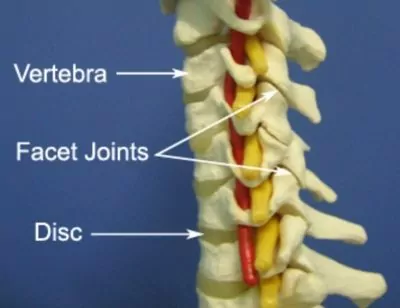
Gradual onset neck pain often occurs in those patients involved in computer work, repetitive or prolonged bending, slouching (especially when sitting or during sleep), shoulders forwards, lifting, twisting movements or combinations of these activities. One of the most common causes of gradual onset neck pain (with or without pain radiating into the upper back, shoulder, upper arm, elbow, forearm, wrist or hand or headache), is a Cervical Disc Bulge (figure 1). In older patients with gradual onset neck pain, one of the most likely causes of symptoms is degenerative changes in the spine (i.e. Neck Arthritis).
There are numerous other causes of head and neck pain, some of which present suddenly due to a specific incident, others which develop gradually over time.
Below are some of the more common causes of head and neck pain with a brief description of each condition to aid diagnosis. Conditions have been organised according to sudden or gradual onset and common or less common conditions for ease of use.
Find out what may be causing your neck or head pain:
Sudden Onset Head and Neck Pain – Common Conditions
Cervical Disc Bulge
Tearing of connective tissue surrounding a disc in the neck with subsequent bulging of disc material (figure 1). One of the most common causes of neck pain, typically as a result of bending forwards of the neck, slouching (especially during sleep or when sitting), shoulders forward, lifting or twisting forces, or trivial movements such as sneezing. May cause neck pain with or without symptoms radiating into the upper back, shoulder, upper arm, elbow, forearm, wrist or hand or headache and often associated muscle spasm. Pain may increase on firmly touching the affected level of the spine and spinal movement is often restricted. Occasionally there may be no neck pain, with only symptoms down the affected arm or only headache. Pins and needles or numbness is occasionally present in the affected arm or hand. Symptoms often increase with repetitive or prolonged slouching (especially during sitting or sleep), bending forwards, shoulders forwards, lifting, neck rotation or side bending movements or sneezing, and, are often worse first thing in the morning.
Facet Joint Sprains
Tearing of connective tissue surrounding one of the joints located on either side of the spine (figure 1) typically as a result of excessive stretching of tissue usually during end of range bending, slouching, twisting, arching or lifting movements or combinations of these forces. Typically causes local neck pain on one side of the spine that may increase on firmly touching the affected joint. Protective muscle spasm is often present.
Cervicogenic Headache
Headache originating from the neck typically as a result of damage to the joints located at the upper aspect of the neck, often as a result of a sudden neck movement (e.g. whiplash), a collision during contact sports or heavy lifting. Typically causes a constant, dull ache that may present in the back of the head, top of the forehead, behind the eye, in the temple region or less commonly, around the jaw or ear. Usually associated with neck pain, stiffness and difficulty turning the neck. Symptoms may also increase on firmly touching the affected level of the spine, usually on one side of the neck, just below the base of the skull. Occasionally other symptoms may be present such as pins and needles, numbness, dizziness, nausea or light headedness.
Wry Neck (Discogenic)
Pain and stiffness in the neck or upper back originating from damage to one of the discs (figure 1) in the neck, resulting in a noticeable limitation of movement and postural deformity (often with the head turned to one side). Usually occurs either upon waking in the morning or due to a specific activity often involving a sudden, quick movement of the neck or heavy lifting. Muscle spasm, restricted movement and tenderness on firmly touching the affected level of the spine are usually present. Pain may be felt in the neck with or without symptoms radiating into the upper back, shoulder, upper arm, elbow, forearm, wrist or hand or headache. Occasionally pins and needles or numbness may be present in the affected arm or hand.
Wry Neck (Facet)
Pain and stiffness in the neck or upper back originating from damage and subsequent ‘locking’ of one of the facet joints of the neck (figure 1), resulting in a noticeable limitation of movement and postural deformity (often with the head turned to one side). Usually occurs due to a specific activity often involving a sudden, quick movement of the neck or heavy lifting. Muscle spasm, restricted movement and tenderness on firmly touching the affected level of the spine are usually present. Pain may be felt in the neck with or without symptoms radiating into the upper back.
Whiplash
An acceleration / deceleration injury of the neck typically occurring as a result of a motor vehicle accident whereby the neck is forcefully thrown forwards, then backwards. Muscle spasm, restricted movement and tenderness on firmly touching the affected levels of the spine are usually present. Pain may be felt in the neck with or without symptoms radiating into the upper back, shoulder, upper arm, elbow, forearm, wrist or hand or headache. Occasionally pins and needles, numbness or weakness may be present in the affected arm or hand.
Less Common Sudden Onset Conditions
Vertebral Fracture
A fracture of the vertebrae (figure 1) typically as a result of trauma such as a motor vehicle accident or heavy collision in contact sports such as rugby. Typically causes significant pain, loss of spinal range of movement and tenderness on firmly touching the affected vertebrae. Occasionally pins and needles, numbness or weakness in the neck, upper back or upper limb may be experienced.
Gradual Onset Head and Neck Pain – Common Conditions

Members Only ContentBecome a PhysioAdvisor Member to gain full access to this exclusive content. For more details see Become a Member. Already a member? Login Now
Less Common Gradual Onset Conditions

Members Only ContentBecome a PhysioAdvisor Member to gain full access to this exclusive content. For more details see Become a Member. Already a member? Login Now
Diagnosis of Head and Neck Pain
A thorough subjective and objective examination from a physiotherapist is usually sufficient to diagnose the cause of head and neck pain. Investigations such as an X-ray, MRI, CT scan and occasionally a blood test are often required to confirm diagnosis and rule out other injuries.
Find a Physio
Find a physiotherapist in your local area who can diagnose and treat patients suffering from head and neck pain.
More Information
- View Neck Flexibility Exercises.
- View Neck Strengthening Exercises.
- View Beginner Pilates Exercises.
- View detailed information on initial injury management and the R.I.C.E. Regime.
- View detailed information on when to use Ice or Heat?.
- View detailed information on Posture and Ergonomic Computer Setup.
- View detailed information on Safe Lifting.
- View detailed information on Postural Taping.
Physiotherapy Products for Head and Neck Pain
Some of the most commonly recommended products by physiotherapist for patients with neck injuries or headache include:
To purchase physiotherapy products to assist with rehabilitation of head and neck pain click on one of the above links or visit the PhysioAdvisor Shop.

Link to this Page
If you would like to link to this article on your website, simply copy the code below and add it to your page:
<a href="https://physioadvisor.com.au/injuries/neck-head”>Diagnostic Guide – Head & Neck Pain – PhysioAdvisor.com</a><br/>PhysioAdvisor provides a head and neck pain diagnosis guide for patients suffering from neck injury created by experienced physiotherapists.
Return to the top of Diagnostic Guide – Head & Neck Pain.

